We all have gaps in our pop culture knowledge, those omissions that elicit gasps from our fellow funnybook connoisseurs. For me, those gaps are vast and constitute anything outside of DC Comics proper. I’m on a mission to rectify my comics knowledge shortcomings and to provide a fresh take on classic stories that others have known for years. The comics may be old but my mind is still pure, wrapped in plastic and sitting on the shelf, waiting to be opened. Welcome to Mint Condition!
This time: Let’s see what all the Love & Rockets fuss is about.
 BACKGROUND
BACKGROUND
The skinny: Love & Rockets is a book you’ll hear talked about in wistful tones on the fringes of comic book conversations. Not a superhero story (mostly), not a crime noir or fantasy/sci-fi (mostly), it stands apart as something uniquely itself. Written by three brothers — Jaime, Gilbert, and Mario Hernandez — Love & Rockets is a very personal and powerful work. The early issues featured two completely separate storylines: Locas by Jaime and Palomar by Gilbert, with periodic contributions from Mario.
Issues read: Jaime’s half of the first Love & Rockets volume (referred to as either Hoppers 13 or Locas) is most easily consumed via three collections: Maggie the Mechanic, The Girl from H.O.P.P.E.R.S., and Perla La Loca. These are the three collections that I read for this review. I purposefully didn’t include any of Gilbert’s work, as it’s a separate story and really deserves its own critique.
Published by: The Hernandez brothers self-published their first issue of Love & Rockets, which was quickly picked up and republished by Fantagraphics Books in a magazine format (as opposed to traditional comic book size). They have been releasing new issues via Fantagraphics for close to thirty years now, some as magazines and others in a more traditional comic book format.
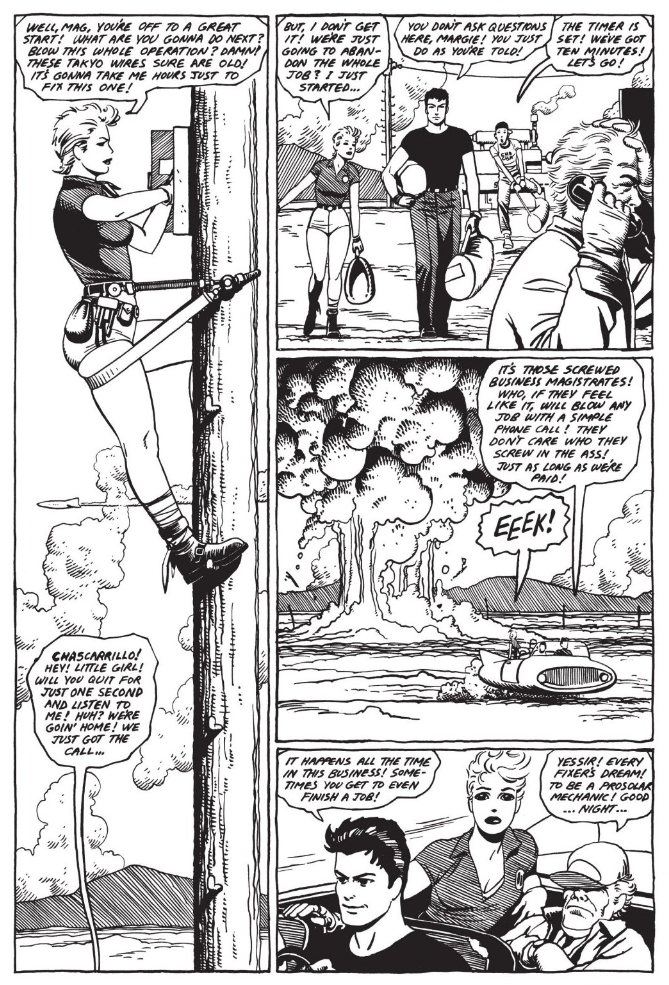
Creators: Jaime Hernandez wrote and drew Locas, which is published in black & white. He and Gilbert Hernandez took turns creating the (color) covers for their books.
My previous experience: Not much. I’d been shown a Love & Rockets story before, but it was long ago and I couldn’t tell you which one it was, who wrote it, or what happened. This style is completely outside my normal comic reads, which makes it perfect for this column. Let’s see how it goes.
 FIRST IMPRESSIONS
FIRST IMPRESSIONS
Story: For someone who reads mostly over-the-top superhero stories, this book was a definite change of pace for me. While there are a few bombastic sequences, Jaime’s Love & Rockets: Locas storyline mostly comes across as a quieter, heartwarming exploration of his young adult experience. The main characters are mostly teens and twenty-somethings who grew up in a quiet Southern California town, looking for a bit of excitement and wanting to express their individuality. Some are heavily into the punk scene, starting and disbanding and reforming bands with tentative names. Others are enamored with the history of ladies’ wrestling or connoisseurs of the local topless bar. At least one of them is batshit crazy.
And then there’s Maggie. Adorable, quirky, and not altogether comfortable in her own skin, Maggie’s journey seems to be more or less the focal point of this first volume. She’s a truly great mechanic, which seems to be a skill in very high regard in this (almost futuristic?) setting but one not associated with women. She spends half of the story living the glamorous life of a world-traveling rocket mechanic and the rest of it running away from her obvious calling to do anything else. It’s a simple, relatable tension that connects the reader to the characters in a very real way and makes Locas an easy page turner. Her off-and-on relationship with her hothead girlfriend Hopey is the other major dangling plot thread that screams for a resolution but just keeps getting more layered and more tangled in seething emotion. Life’s like that.
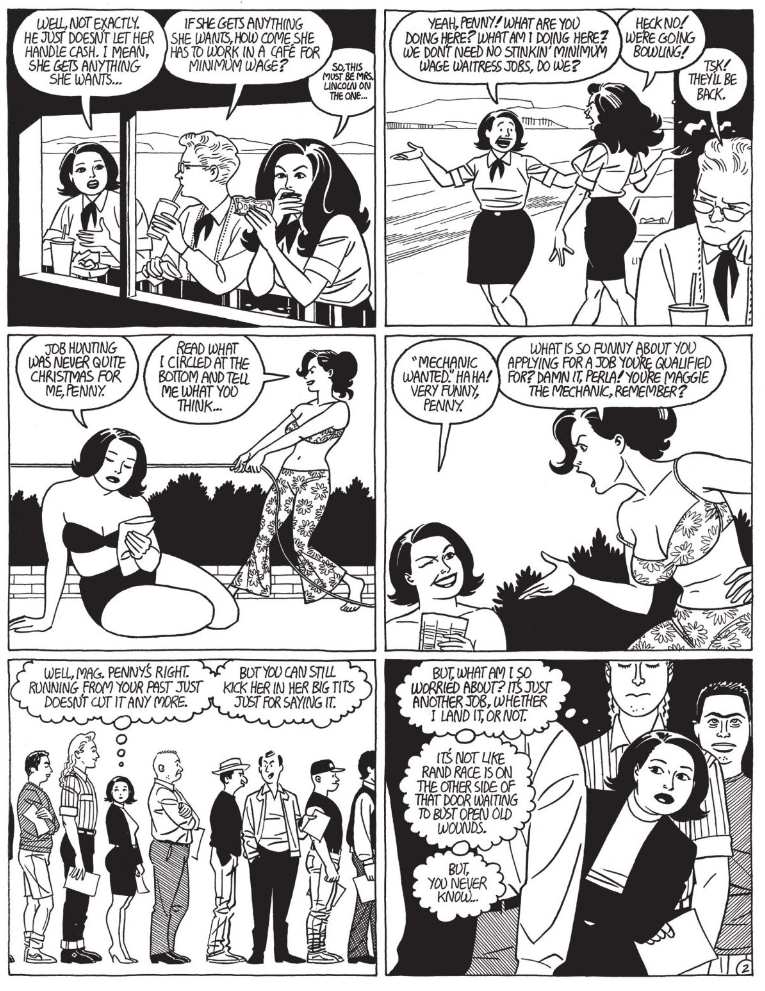
Love & Rockets is more than it seems at first glance. What initially comes across as a jumble of random scenes and arbitrary character moments eventually emerges into a brilliant tapestry of interconnected life events with a palpable thread of something resembling fate. The relationships are complicated and unconventional — just when you think the story will zig, it zags hard. These characters are well understood by their creator, and the overall tone is just understated enough that it rings true to life.
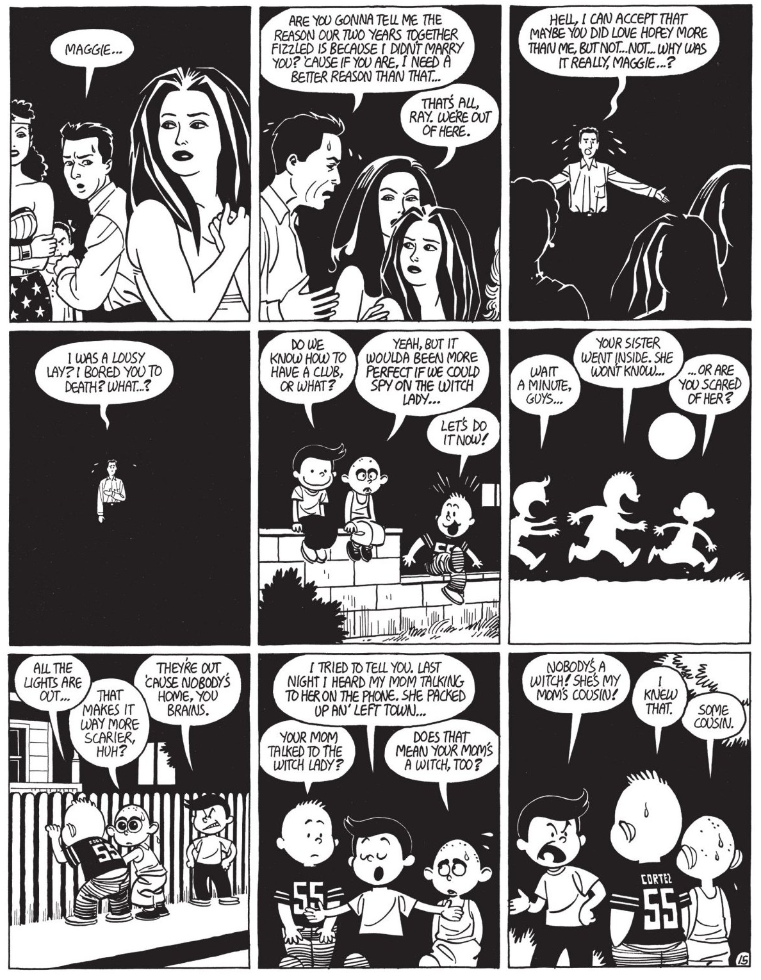
I had a difficult time identifying the characters at some points. To its credit, Love & Rockets has an extremely realistic portrayal of outfits (they change every day), hairstyles (they change every few months), and body types (they change sometimes). Nicknames change as well, depending on who is using them and when. So connecting the dots between, say, early anarchist skinhead Hopey and later downtrodden coat-and-scarf Hopey presented some challenges. There was enough information that I could always puzzle it out by going back and rereading the last few chapters with eyes peeled for context clues. But I’m sure I’m not the only one who struggled with this. At one point, the author even included a callout caption box to provide the helpful hint that “Perla, Maggie, Shrimp, and Margaret are the same person”.
The depictions of the female body in this comic are notable for their realism and range. Maggie spends most of the comic in various states of undress, which can come across as either sexy, goofy, or vulnerable, depending on the particular scene. The variation of outfit types and how each physically hangs on the body is really impressive. There are a bunch of fat jokes thrown around between the women; not all of them very nice, but convincingly voiced. That a man was able to capture such an honest portrayal of a female world is an achievement worthy of admiration.
 VERDICT
VERDICT
New reader accessibility: You’ll get more out of this book if you start at the beginning of the Locas story (Maggie the Mechanic), simply because of the emotional resonance that pays off later. That said, this is not at all a linear tale. Life situations change, as do relationships, careers, and desires. Wherever you jump in, you’ll find that the cast is endearing and whatever current situation they happen to be in will hold your interest.
Desire to read more: Absolutely. Only reading Jaime’s half of this story leaves me feeling like…well, that I only have half the story. If I truly want to understand and appreciate Love & Rockets, I’m going to have to devote a future column to revisit the rest of this. To be continued.
Final Thoughts: In many ways, I am not the target audience for this book. I’ve never been into the punk scene, so 97% of the music references were lost on me. I’m not particularly knowledgeable about wrestling or Latina culture. I didn’t grow up in the Western U.S., I’m a good twenty years older than the characters, and I’ve never been a woman. But even despite all that, this story held together and kept my interest through almost 900 pages. You don’t have to be similar to someone to feel empathy towards them, and Jaime Hernandez seems to have cracked the formula for lovable, relatable characters.
Suggestions for future columns? Leave them in the comments. And check out the full Mint Condition archive here!


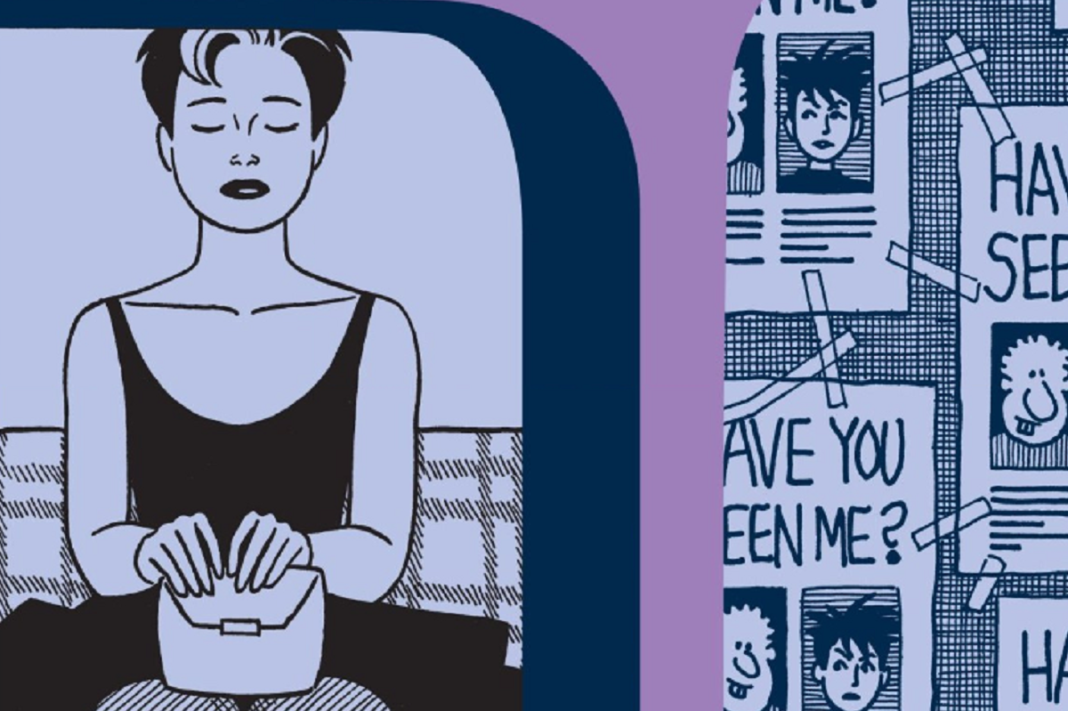
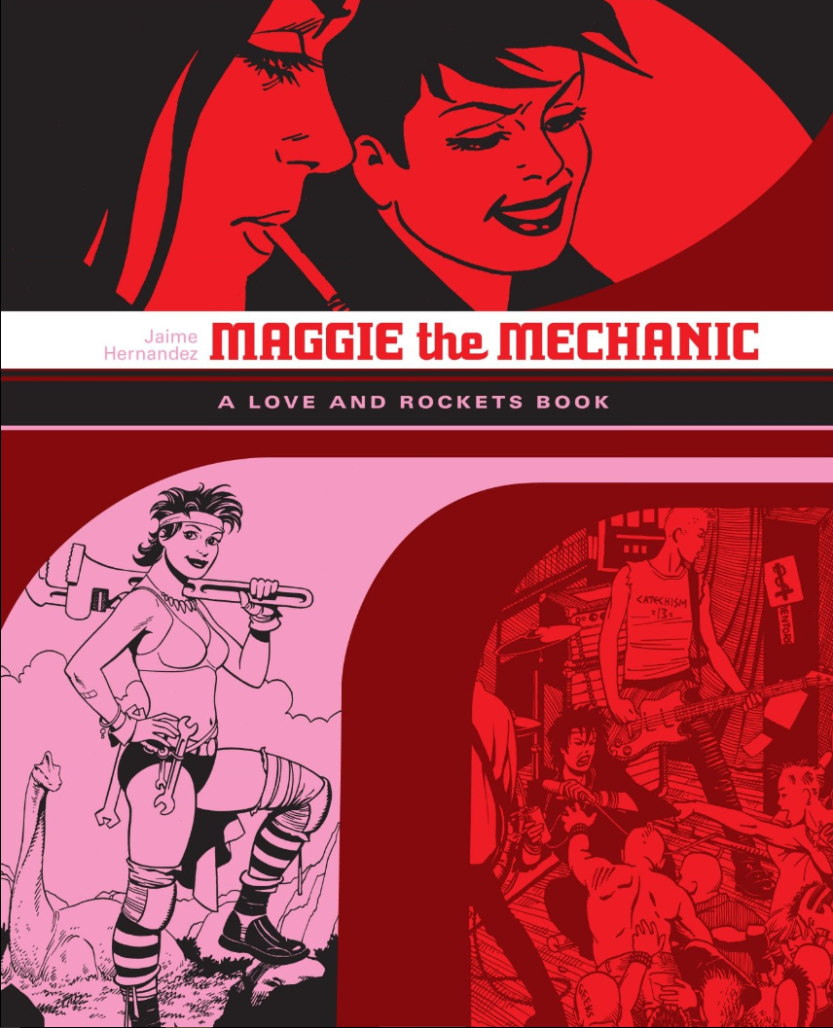 BACKGROUND
BACKGROUND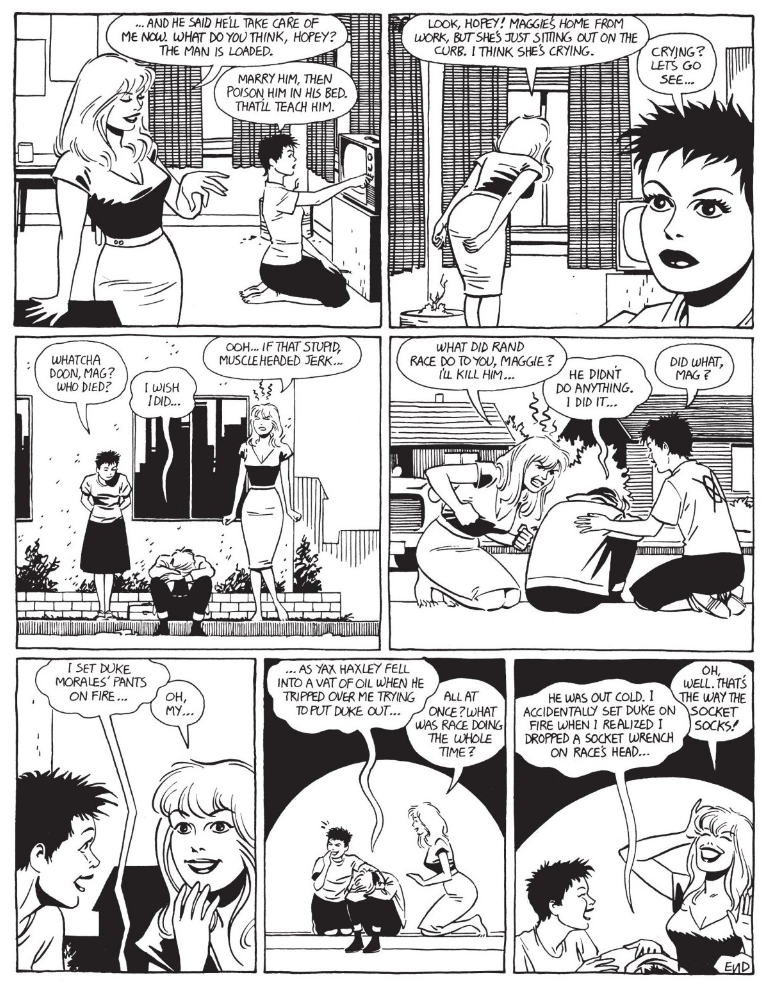 FIRST IMPRESSIONS
FIRST IMPRESSIONS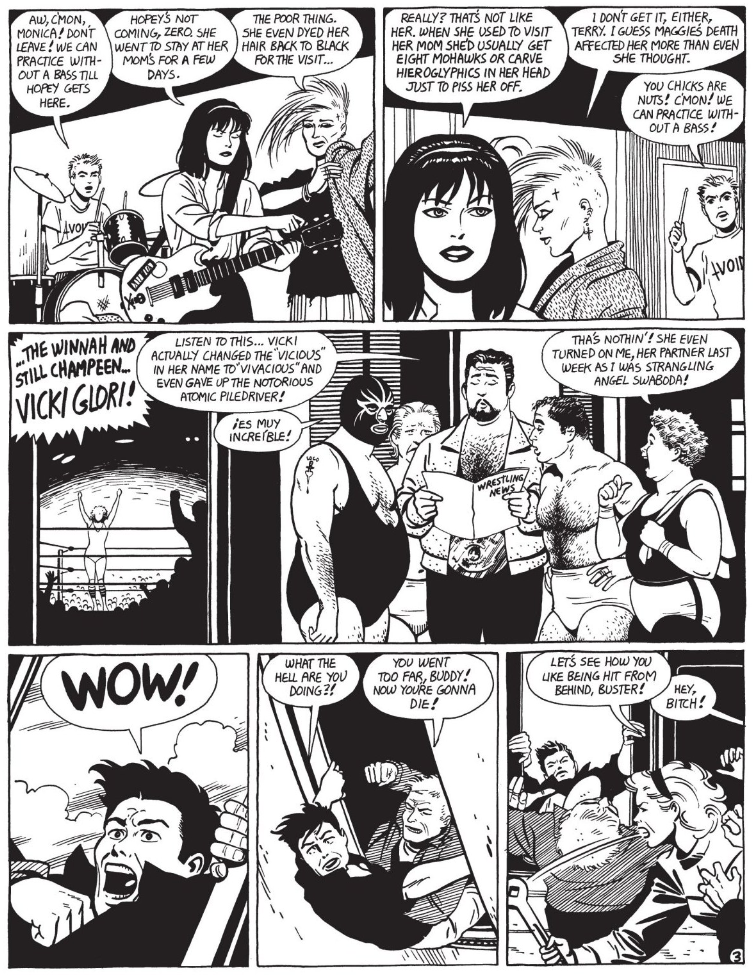 VERDICT
VERDICT

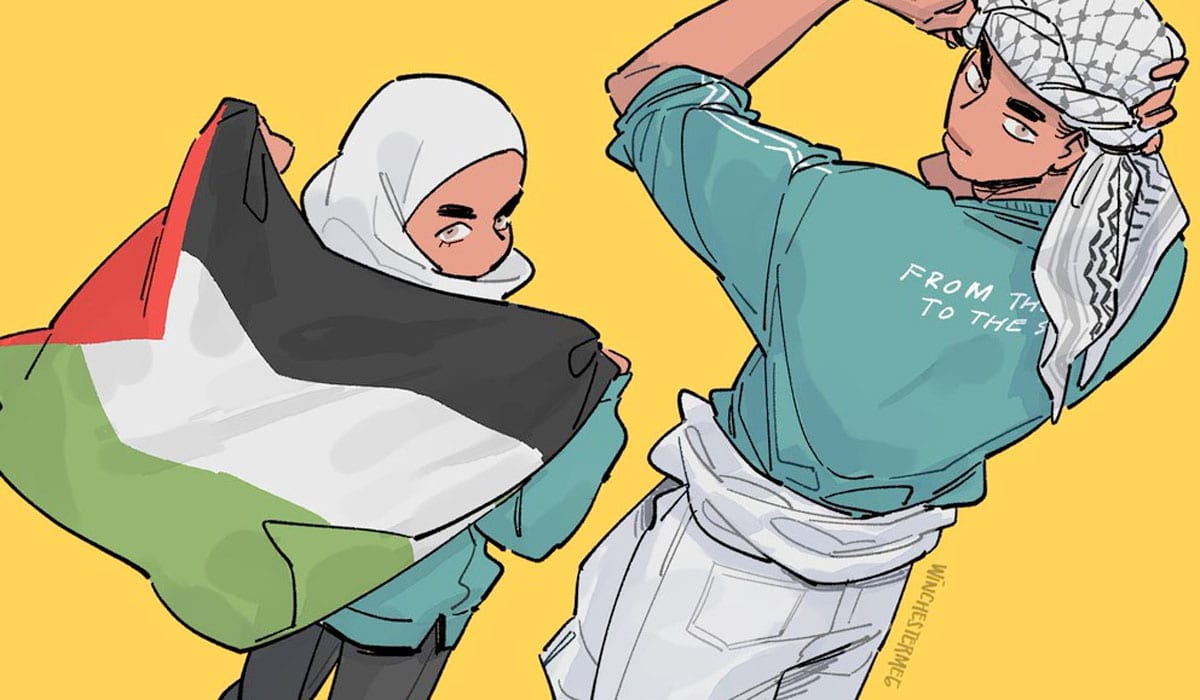



Cant wait to hear your takes on the Beto half, but I do wish you read them all mixed up as originally published. The two stories running side by side enhanced each other.
Looking forward to your Beto takes!
Comments are closed.